Ultimate Guide to Spring Photography – Tips and Tricks
by Alex W.
April is here, and the few warm days we’ve experienced so far indicate that spring is well on it’s way. Winter is a fantastic season for photography, but spring provides it’s own opportunities as well as giving us a much more comfortable working environment for photography.
The warmer weather wakes the plants and animals up from their winter slumber and sets them into overdrive. It’s an exciting time for photographers, but with things in the natural world changing so much it’s important to have at least a vague plan in place in order to make the most of the spring time photography opportunities.
Whether you’re a landscape, wildlife, macro, or portrait photographer there are new opportunities in spring, so we’ve rounded up some of the best for all types of photographer!
Contents
Before We Start…
Just a quick note before we make a start on this comprehensive ultimate guide to spring photography. Make sure to check out the forecast, and I’m not talking about weather here!
No matter where you are in the world, the blooming flowers of spring will have a peak period that you don’t want to miss. This is the time that the flowers are at their very best, making them perfect for photography.
Finding these predicted peak times can be a challenge, but the best way I’ve found is to join Facebook groups dedicated to either nature photography or flowers.
In the northern hemisphere, spring can be tracked pretty accurately from south to north. So ask people if certain flowers you want to photograph are blooming south of you, and then you’ll have an idea of when the peak time might hit your area.
If you’re photographing the gorgeous cherry blossom trees there’s even a website predicting the peak times here!
You Might Like… Ultimate Guide to Waterfall Photography
Landscape Photography in Spring
Spring is a refreshing change of pace for landscape photographers. They’ve spent months battling through snow and icy wind in pursuit of the perfect shot, and while winter is stunning for landscape photographers the discomfort of shooting in such conditions does start to take it’s toll. When spring rolls around it starts to feel more comfortable when waiting for the light, and as such many landscape photographers feel somewhat revitalised. It helps that the opportunities for photography are rife as well.
You Might Like… Ultimate Guide to Landscape Photography
Bluebells
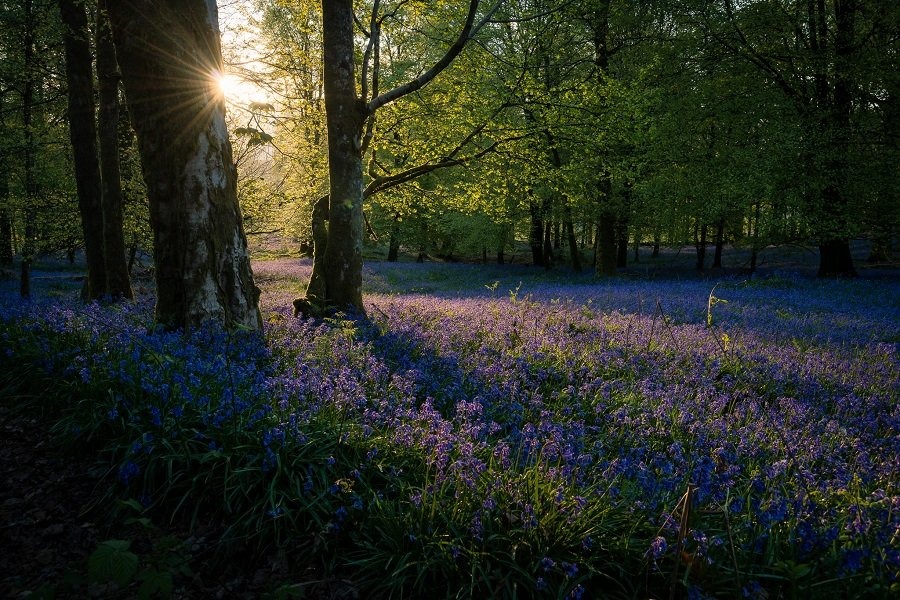
This is the big one, and while it may be somewhat overdone it’s still very hard to resist going on the hunt for Britain’s ubiquitous springtime flower. They are rarely far away, and their early emergence in sprint is almost a dividing line between the cold and warm months of the year. It obviously helps that they are extremely photogenic too. Mid-April onwards is your best bet, but it all depends on the weather during the early weeks of the month.
Where to find bluebells: This is one of the main draws of shooting bluebells – They’re just so easy to find! Many patches of deciduous woodland harbour them, and with them often appearing in large carpets and having distinctive leaves it’s easy to find them before they flower and start to plan your shots. Look for large areas of open shade within deciduous woodland and you’re likely to find them.
You Might Like… Ultimate Guide to Forest Photography
How to photograph bluebells: Sunrise is a very popular time to photograph the bluebells, with a lot of landscape photographers hoping to capture that elusive dawn mist in conjunction with the woodland, bluebells, and early morning rays. Obviously that requires quite a lot of perseverance and luck, but you can increase your odds by finding an east facing patch of bluebells in an area where mist is fairly common. This is where having local knowledge becomes a major advantage.
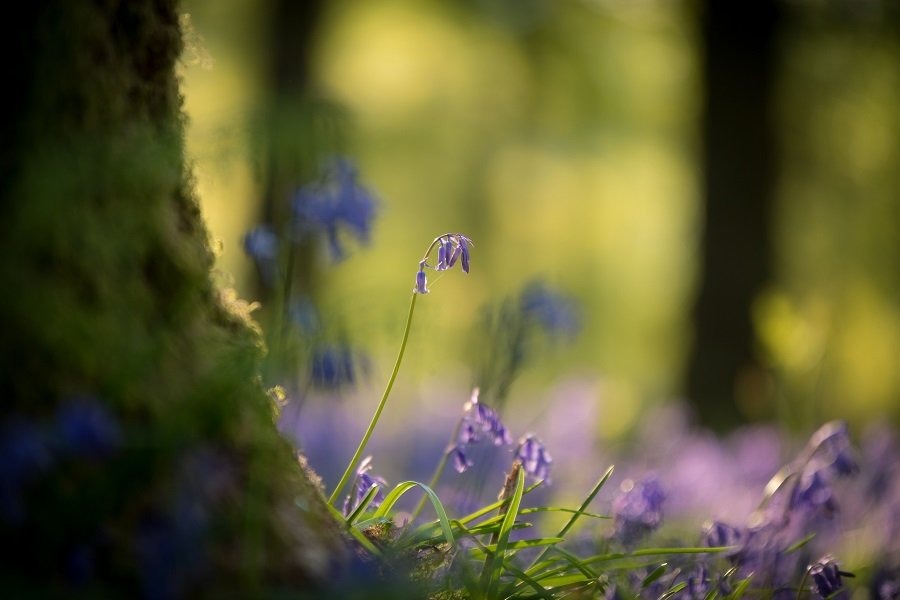
It doesn’t just have to be those rare moments of splendour for you to capture beautiful bluebell images though, the middle of an overcast day is just fine too! The tree canopy and clouds act as a huge softbox to diffuse the light, and by using the vibrant spring greens as a backdrop and excluding the sky you can create some beautiful scenes in the middle of the day!
You can shoot bluebells in whatever way works best with the scene. This could be a wide-angle view showing off the swathes of flowers, or you could go in close with a telephoto or macro lens and capture the beauty of the flower itself. Try a few ideas, and make sure to experiment with perspective. A woodland photograph can look very different depending on whether you’re at head height or low down to the ground.
Important note – Keep to the paths when shooting bluebells. They are very fragile flowers, and going on a trek through the middle of the flowers is destructive to say the least. Please refrain from destroying the vegetation.
Rape Fields
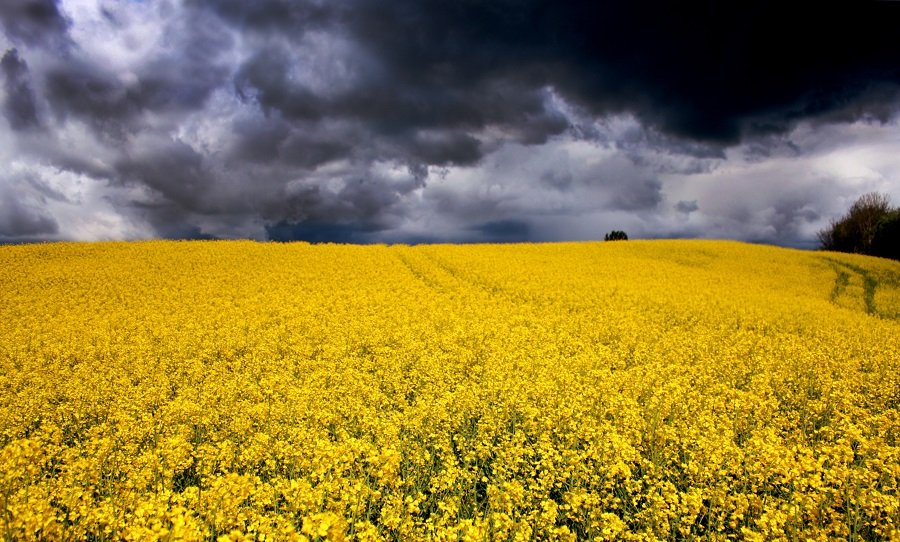
Another sure sign of the approaching summer months is the swathes of yellow fields in the British countryside. Rape fields carpet many of the fields during April, and they’re even easier to find than bluebells! You don’t have to go searching around woodland to find rape fields. Instead, just find a high vantage point and you can spot them a mile off.
These also offer another dimension to landscape photography in spring, because they’re one of the few subjects that actually work best under a bright, clear sky. The yellow of the rape works best with the other primary colours, which happen to be blue and red. If you can combine all three colours in a single shot it can be a stunningly colourful shot, but if you’re struggling to find a red subject the rolling fields of yellow underneath a clear blue sky works brilliantly too. This is one of the few times that I would recommend shooting landscape photographs in the middle of the day, so there’s no need to set that alarm quite so early.
Top Tip: Use a polarising filter to deepen the blues in that clear sky, making sure to shoot perpendicular to the sun.
Spring Showers and Mist
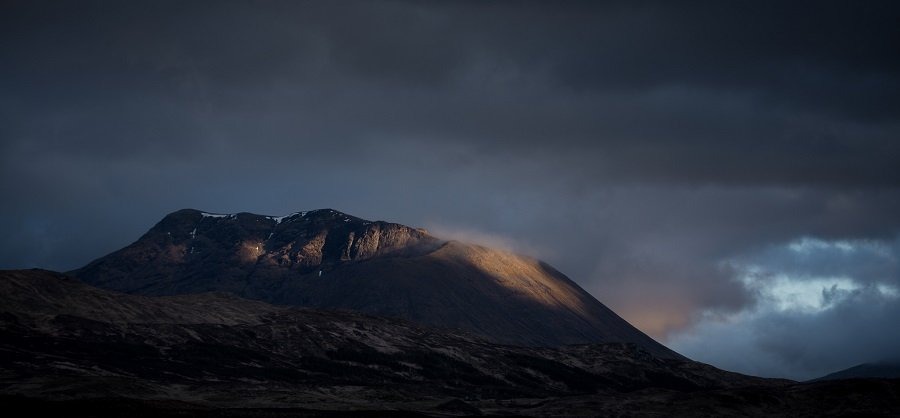
Spring is renowned for the so-called spring shower, a period of heavy rain that usually comes and goes quickly. It might be tempting to head back to the car when the heavens open, but try to resist that and stay out. These showers themselves can be great photographic material with all the drama of heavy rainfall, but the real magic comes after the showers have passed.
The storm clouds coupled with the emerging light can create fantastic spotlighting on the landscape, and if this happens at sunrise or sunset you could have something magical on your hands. These showers also serve the great purpose of clearing away atmospheric haze and allowing even far-away details to emerge in your photo.
You Might Like… Forget the Rainy Day Projects – Get Outside and Shoot
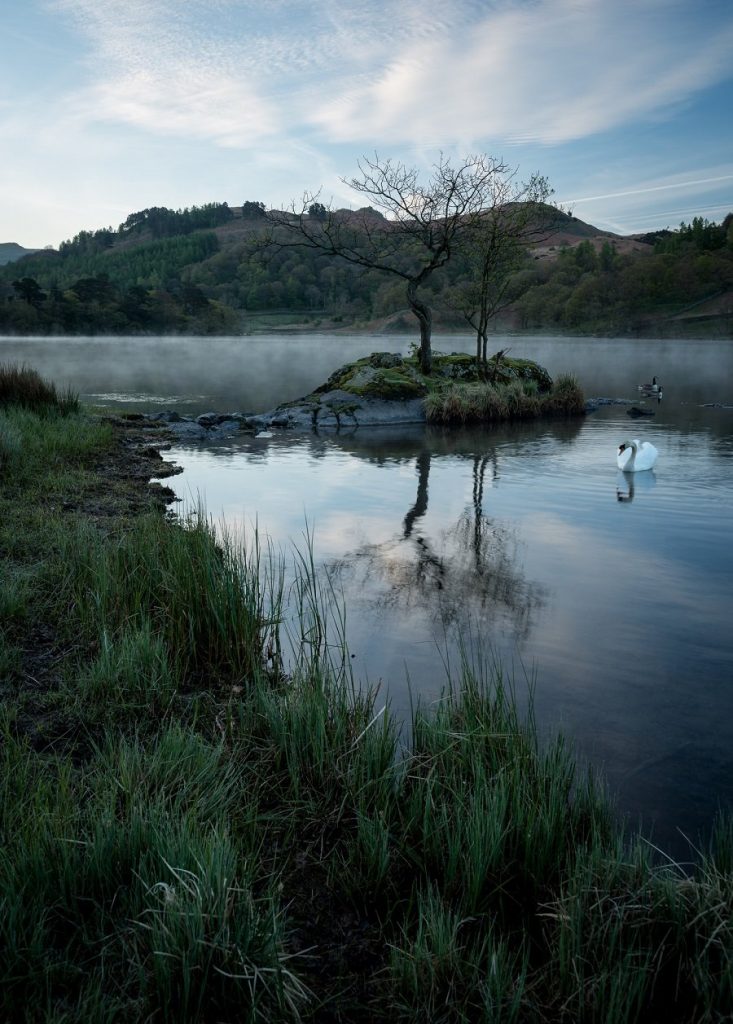
Mist is a landscape photographers dream. It transforms even the most familiar landscape, lending itself to beautiful minimalist images as well as grand vistas overlooking cloud inversions. Spring happens to be one of the best times of year to capture the dawn mist. Watch out for a clear, cold and still night after an overcast or rainy day. If you see these conditions make sure to set the alarm early, because the chances of mist are high! It goes without saying that mist is more likely to form above bodies of water, so there’s your first point of call.
You Might Like… Best Cameras for Landscape Photography
Wildlife and Macro Photography in Spring
Landscape photographers have a lot to look forward to when spring starts to make an appearance, but other outdoor photographers are just as keen to get out.
Flowers and insects are a staple diet in macro photography, and spring heralds in the start of prime macro photography season. Meanwhile, wildlife photographers get to welcome back all those hibernating or migrating species and train their lens on newborn animals. Not to mention the fact that they no longer have to spend five hours lying in the snow to get the shot.
Returning Birds
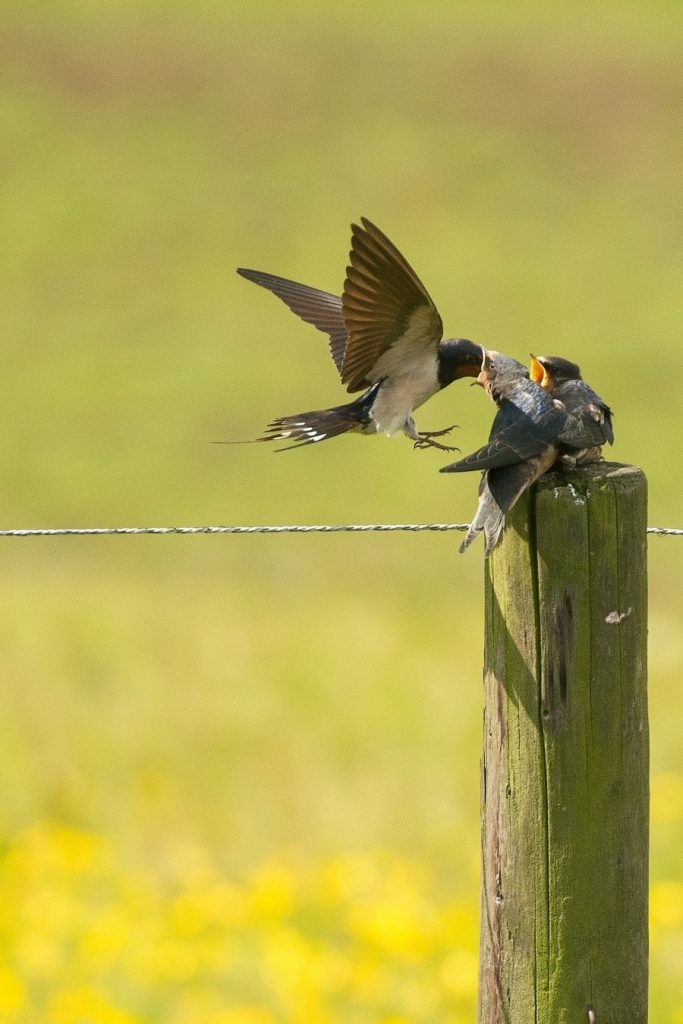
There comes a time when everybody who ventures outdoors notices that the birdsong has had it’s volume turned up. It might even be while you’re in bed one morning, but you can bet that your local wildlife photographer won’t be in bed.
Many of the birds that grace the UK do the smart thing during winter and migrate to warmer climes. This is thousands of miles in air travel, all to avoid the grimness of the British winter. Swallows are a prime example, and their return from Africa in the spring is a sign of things to come for those specialising in bird photography.
There are countless species that arrive back on our shores when the weather warms up, and the frantic nesting and the hatching of fledglings provides yet more photographic material.
Fledglings – Spring is the time when eggs start to hatch, giving the newborn birds as much time as possible to prepare for the winter chill or travels. It pays to be very respectful and cautious around bird nests, but there are some unique photographic opportunities to be had for the patient photographer. If you notice the fledglings constantly standing on the edge of their nest it’s likely that they are preparing to take their first flights. This warning sign can last for days, but if you can be there at the right time you can capture the very first seconds in the air.
Preparing the Environment – You don’t always have to head out into the countryside to photograph birds. Instead, why not try creating a bird friendly photography studio in your garden? A raised piece of turf offers the perfect plate for some bird feed, and you can even put this in front of a homemade backdrop to make the background more aesthetically pleasing. A blanket spraypainted varying shades of green and brown attached to the outside of a shed works wonders. You can even take it a step further and build yourself a reflection pond in your bird feeding area, and remember that is pays to make this reflection pond slightly raised to allow you to create a more pleasing, lower angle of view.
Other Wildlife Photography Opportunities
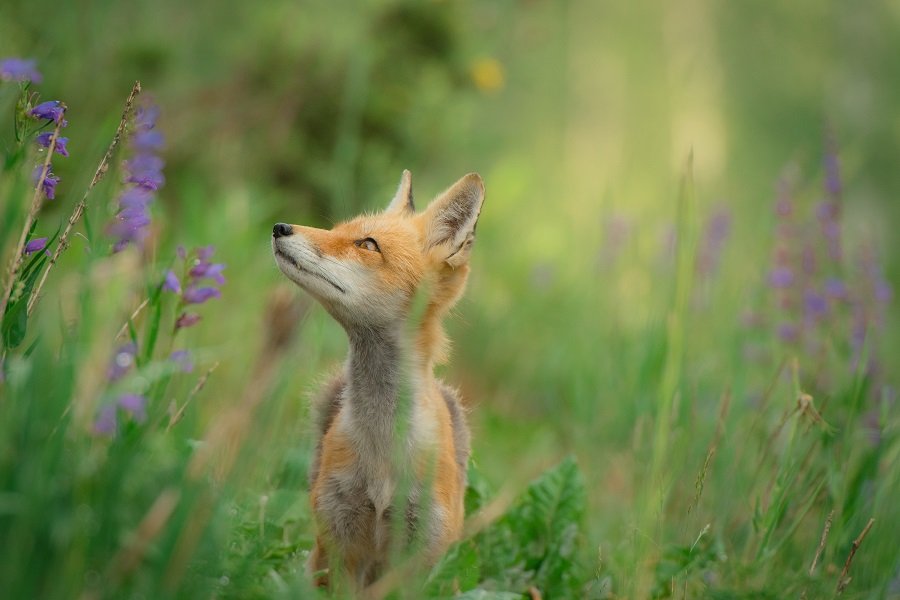
It’s not just the birds that are back to their photographic best in the spring. Remember: Spring is a time of change and rebirth, and that’s exactly what happens in the natural world.
Many of the mammals native to the UK will spend springtime either giving birth to their newborn or searching for a mate in preparation for a summer birth. Keep your eyes peeled for fox burrows, which will often harbour fox cubs at this time of year.
Hares are out and about in the search for a mate as well, which leads to one of the more entertaining spectacles in the animal kingdom. As Brown Hares search for their mating partner they can often get a little over exuberant, and if the female isn’t interested she’ll eventually get sick of the pursuit and turn to face her hunter. What ensues is a boxing match between hares, and I can guarantee it’s not a sight you’ll forget in a hurry! Try scouting out open fields at dawn and dusk, and you might be lucky enough to spot a hare or two.
You Might Like… Ultimate Guide to Autumn Photography
Awakening of the Flowers
The landscape photographers aren’t the only ones out and about enjoying the springtime bloom – Macro photographers are arguably in an even better mood about it. Flowers and insects are a staple diet for macro enthusiasts, and after a bare and cold winter the spring blooming can feel like Christmas has come eight months early!
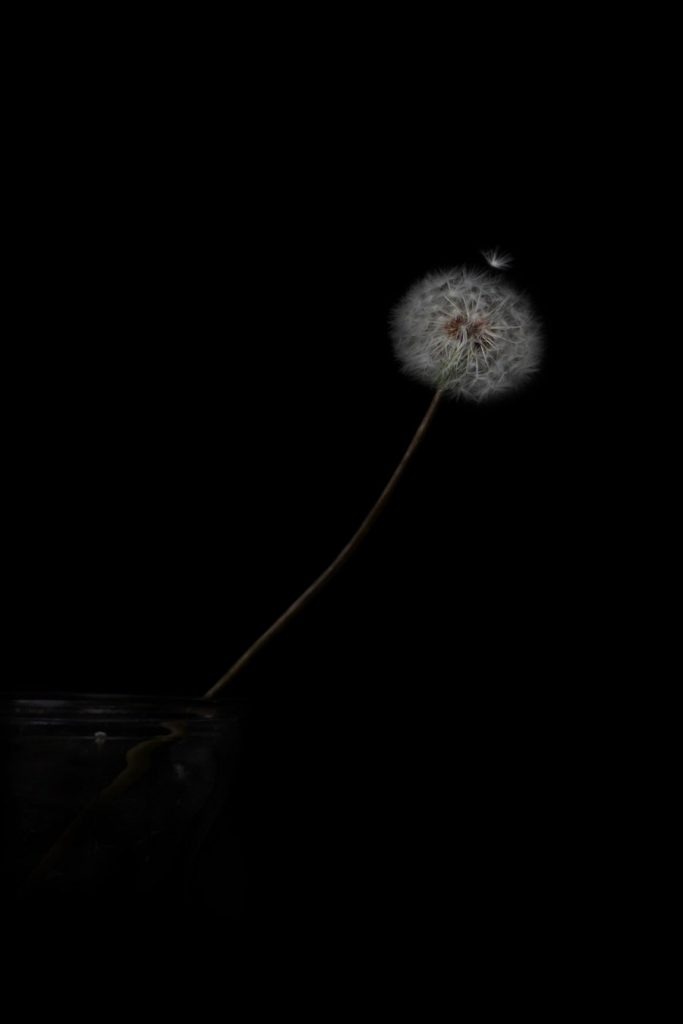
Obviously all flowers start to bloom at different times of the year, and the first ones to look out for are the snowdrops ubiquitous around churchyards. Bluebells follow a month or so later, but by late April there are plenty of colourful flora gracing our gardens, woodlands, and clifftops.
The beauty of macro photography is that it doesn’t necessarily have to be a widely appreciated subject to make a beautiful image. Dandelions are a prime example – Often overlooked by the average passer-by, but for a macro photographer they offer a host of possibilities.
Macro photography is definitely a challenging endeavour, but the results can leave you taken aback. Just remember – Composition and lighting remain very important even when working in close quarters.
Macro Photography Tips – The most difficult part of macro photography is focusing. The image is so highly magnified that even the slightest movement in camera or subject will drastically alter focus, and autofocus often struggles to perform correctly too. Try mounting your camera on a tripod and using manual focusing. If the viewfinder is proving too difficult you can always switch to live view and zoom in to ensure perfect focus.
The other issue is depth of field. When magnified so heavily the depth of field becomes incredibly slim – So much so that you can have a flower’s pollen in perfect focus but the leaves around it out of focus. You can stop down to a very narrow aperture to increase depth of field or use techniques such as focus stacking, but I find it preferable to work with the narrow depth of field and just make sure the most interesting part of my subject is in focus.
Once you’ve got the techniques down, now is the time to start experimenting. Get down low to the ground, look for new perspectives, and always keep half an eye on the background. Nothing ruins an image of a flower more than a brightly coloured wheelbarrow in the background.
Macro Photography on a Budget – Macro lenses are expensive, there’s no denying that. And when you’re not even sure you’ll enjoy macro photography it can seem like a huge outlay. There is a way around this though. In fact, there are three ways around it.
-
Neewer 12mm,20mm,36mm AF Auto Focus ABS Extension Tubes Set...
- A good alternative to macro lenses for amateur and professional photographers who want to try on macro shooting.
- Supports auto focus through electronic contacts that of good quality to get a better linkage with camera and less difficulties in focusing when doing macro shooting.
You can purchase extension tubes which fit between your lens and camera to increase the distance between your lens’ rear element and the camera sensor. This reduces focusing distance and allows you to turn any of your lenses into a macro lens. Depending on your budget you can either get extension tubes that transmit the electronics between lens and camera, keeping metering capabilities in tact. The cheaper option are ones with no electrical contacts, which means you’ll need some trial and error to find the right exposure. We recommend these ones as one of our favourite photography accessories.
Another option is to use a reversing ring, which is an adaptor that effectively allows you to join two lenses together by their front element. When this is attached to the camera it means you’ll be looking through two lenses and out of the rear element of the second lens. Just like extension tubes this decreases focusing distance and allows you to get in close.
Finally, you can try Close-Up Filters. These are basically just magnifying glasses for the front of your lens, and often come in sets to allow different magnifications. This is probably my least favourite method of budget macro photography, but it’s worth a go if you’re struggling with the reversing rings or extension tubes.
The Insect World
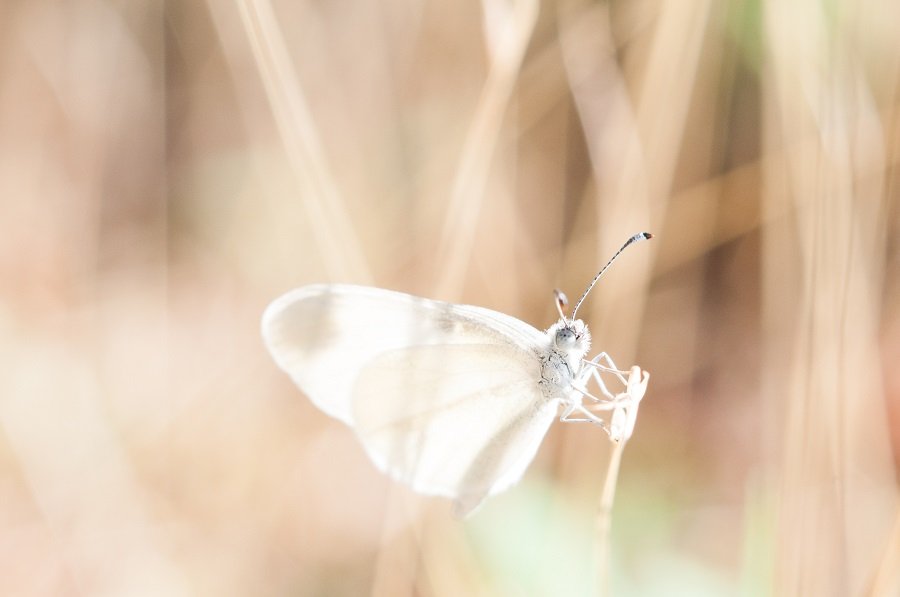
When the flowers start to bloom, you can be certain that insects aren’t far behind. They are very location dependant, but almost any garden with flowers in will start to see butterflies and bees out and about in spring, and this is actually one of the best times to try and photograph them.
That’s because the cooler temperatures, when compared to the summer months, cause them to be somewhat dopey. Insects are cold blooded, so without the abundance of warmth they don’t have the heat in their body to move around much. This allows us as photographers to get closer to them without them scarpering, and gives us additional time to get the shot compositionally and technically correct.
Early morning is the best for this. Not only will you have the gorgeous dawn light to work with, but the subject of your photography will be even more subdued after a chilly night. Get up early and find yourself a butterfly perched somewhere and you can spend a good half an hour entranced by it.
Note: As always, don’t be inconsiderate. That includes causing unnecessary stress to your subjects, and please don’t partake in the practise of capturing insects and putting them in the freezer just to get a shot.
Portrait and Street Photography in Spring
It’s not just nature photographers that get to have all the fun during spring, there are plenty of reasons for the portrait and street shooters to get excited. Admittedly the list isn’t quite as extensive, but after a long and gloomy winter the opportunities presented lift the spirit of everybody.
Portrait Photographers
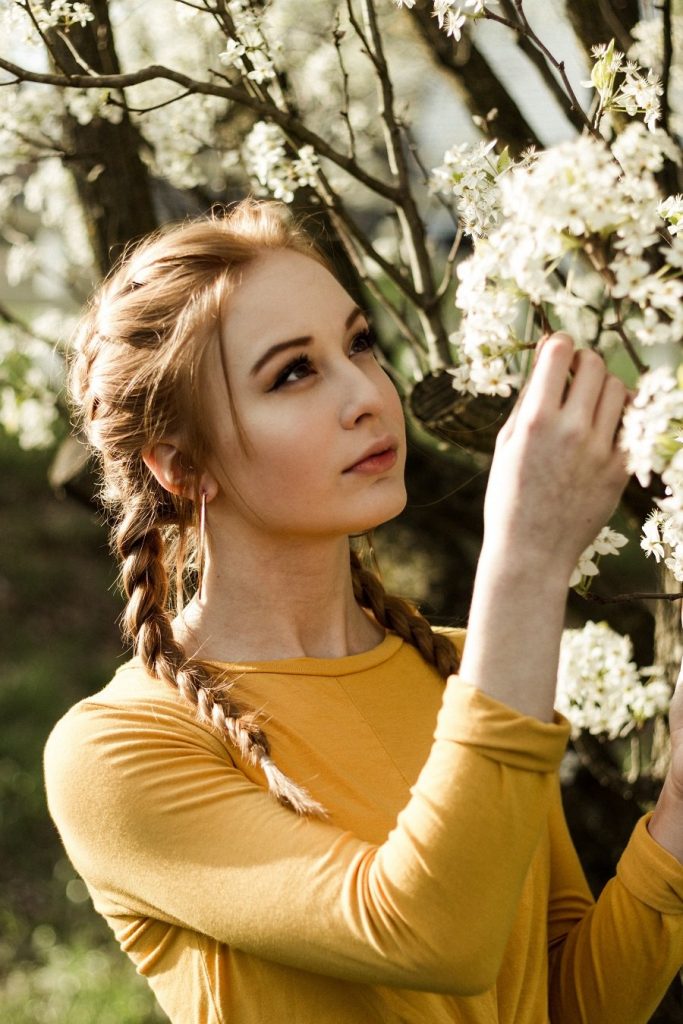
This is as simple as taking your models outdoors. If you’ve spent the winter months stuck inside the studio this can feel like a (literal) breath of fresh air. Take your models to the countryside and conduct some photoshoots in the spring foliage.
The opportunities are endless. There’s the vibrant greens of arable farmland to use as backdrops, or meadows of spring wildflowers to add a touch of colour to your shoots. Add some soft dawn or dusk light to the mix and you can create something magical. If it’s a warm day try dressing your subject in something light and airy to convey the increasing warmth as well.
The spring flowers can be used in a variety of ways. The model can interact with them such as in the photo to the right, or alternatively they can just be used as a colourful backdrop.
Street Photographers
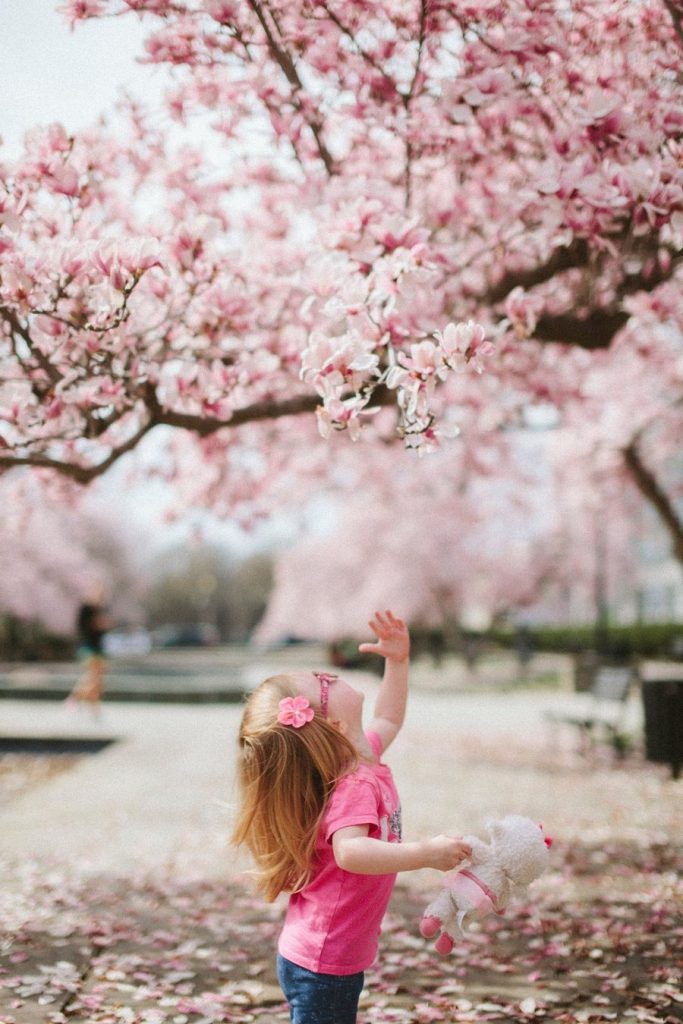
It can be a little more difficult to appreciate the beauty of spring when you’re living in the city, but keep your eyes peeled when out and about and you can find little pockets of spring all around the cities.
This can be tree lined roads to inner city parks. The signs are there, and all you need to do is try to implement these signs into your street composition. Doing this can add little bursts of colour into your street images and make them stand out from the crowd, just make sure you’re putting the work into your overall composition too.
If you’re struggling with that element, we have a great guest post on where to start out in street photography.
So there you have it, a ton of ideas to keep you photographically occupied throughout the spring months. Just remember: It doesn’t matter whether you’re a landscape, wildlife, macro, portrait, or street photographer, there is something that everybody can take advantage of in spring!
What are you most looking forward to photographing in the coming months? Let us know in the comments!
Read More…
DSLR or Mirrorless – Which Camera System is Right for You?
Behind the Lens with Frank Bell
5 Filters That Can Transform Your Photography Forever
From Capture to Completion – An Introduction to Adobe Lightroom
 |
 |
 |
 |

About Alex W.
Alex is the owner and lead writer for Click and Learn Photography. An avid landscape, equine, and pet photographer living and working in the beautiful Lake District, UK, Alex has had his work featured in a number of high profile publications, including the Take a View Landscape Photographer of the Year, Outdoor Photographer of the Year, and Amateur Photographer Magazine.
Thoughts on "Ultimate Guide to Spring Photography – Tips and Tricks"
 |
 |
 |
 |
You can Get FREE Gifts. Furthermore, Free Items here. Disable Ad Blocker to receive them all.
Once done, hit anything below
 |
 |
 |
 |
